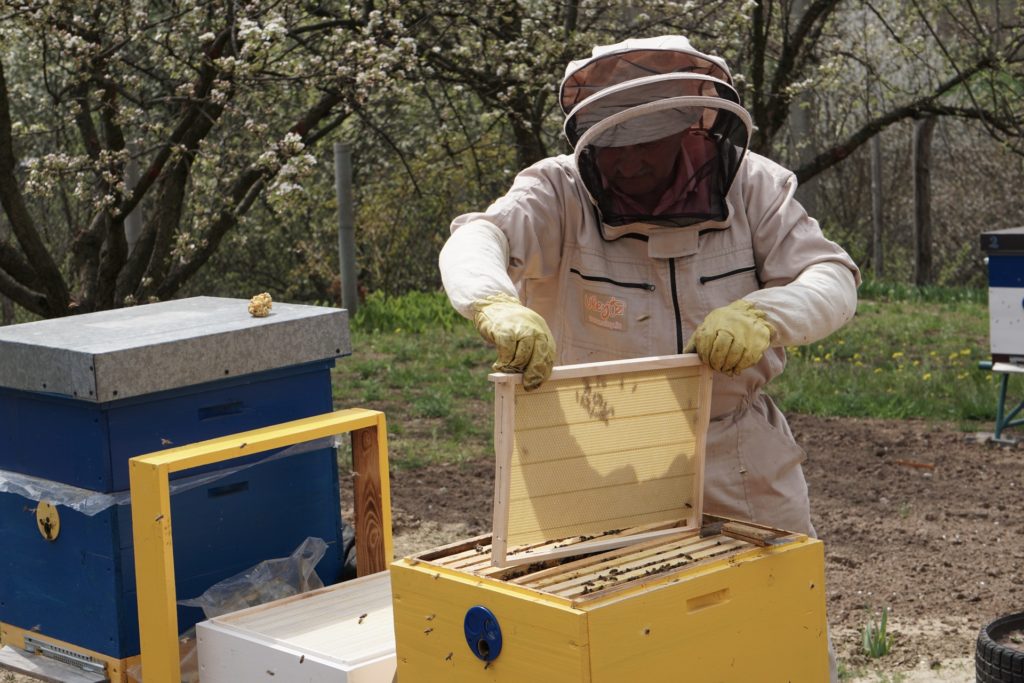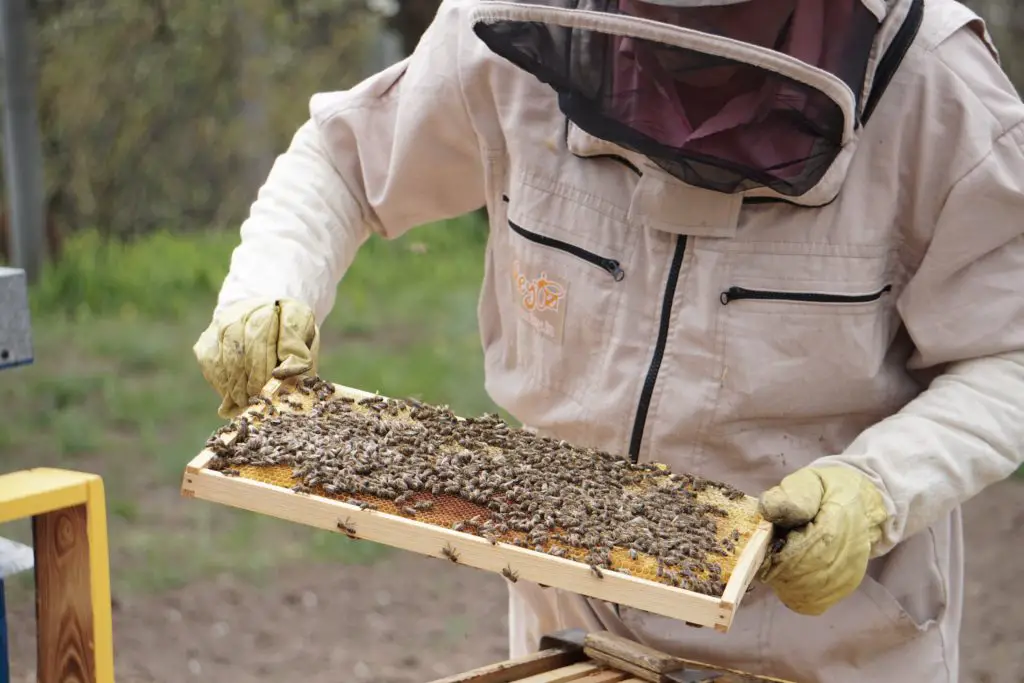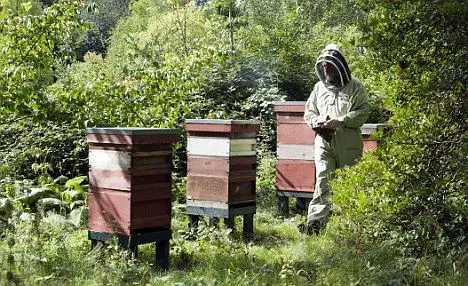Affiliate Disclaimer - As an Amazon Associate I earn from qualifying purchases.
It supports the website. So, Thank you
When it comes to keeping bees, timing is everything. Bee activity is in perfect sync with the changing seasons so if you’re setting up a hive, you need to make sure that you’re right on time.
Of course, you may make a decision later in the spring to start a beehive and are probably wondering whether the timing is right. So the question is; how late can you start a beehive?
You should start your beehive in the early spring. For most places, this means starting in April. However, it is possible to hold off until around June or July but you may find that the bees struggle over the first winter.
If you want to give your hive the best start then setting it up at the right time is crucial. In this guide, we’ll talk about why spring is the best time of year and how bee activity changes along with the seasons.
Table of Contents
When Is The Best Time To Start A Beehive?
If you’re looking to start a beehive, it is best to wait until spring. If you already have a beehive, this is the time of year that the bees might need a little extra input from you as they will have exhausted most of their food supplies over the course of the winter. But it won’t be long before the flowers start to bloom and those forager bees will get to work.
Spring is the perfect time to start a beehive as the flowers will be beginning to bloom, giving the bees the chance to forage. Moreover, the weather will be better so the bees will become more active. Of course, just because you’re going to put the bees into the hive in spring, that doesn’t mean that you can’t set everything up well in advance. In fact, if you’re painting a hive, you’ll want to do this at least six weeks beforehand so the gasses evaporate.
When you begin a new hive in spring, you must keep in mind that your package of bees will turn up without any food. So, when you install the bees into the hive, you will have to provide them with some sustenance; sugar syrup is a popular choice. This won’t last for long though as the hive will soon become independent.
Over the course of the first spring, the queen will lay plenty of eggs and the rest of the colony will have built up some good food stores. In mid-spring, around May, you’ll notice that the population of the hive will have increased so you might need to give it a little help with some more sugar syrup.
Consider The Weather
As we touched upon earlier, once the weather improves, bees will become more active. This is because they can only really fly in certain conditions; dry and warm. If it’s too cold or the weather is very wet, you’ll notice bee activity decreases significantly.
Bees also become more active as the flowers begin to bloom. The further into spring we get, the more the hive will flourish. However, once the season changes and things get cooler, the bees will enter into a state of dormancy so starting a hive would be pointless as they simply wouldn’t be able to remain self-sufficient.
One thing that new beekeepers must keep in mind is that spring can happen at different times according to location. For people in northern states, it may be necessary to start a hive much later than those in southern states. For this reason, you should always consider your own climate before making a decision on when to start the hive.
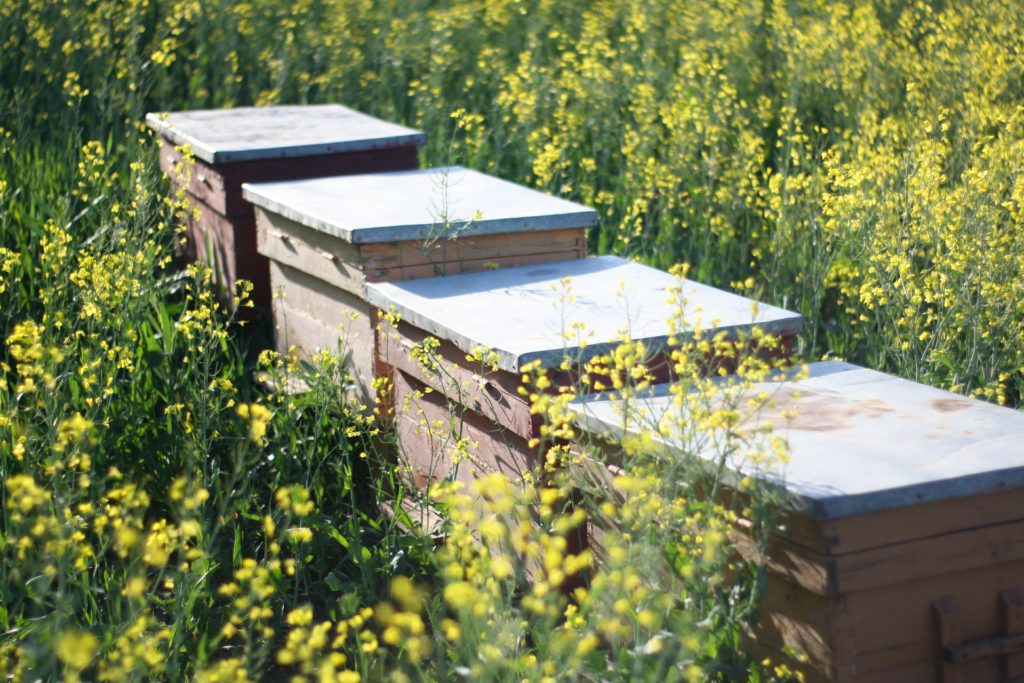
Ordering Your Bees At The Right Time
One of the most important things you will need for starting a beehive is a package of bees. Generally, you can expect to pay between $80 and $125 dollars per package and this will contain around 10,000 bees including a mated queen.
However, just because you order your bees on a specific date, that doesn’t mean that they’ll arrive when you expect. It’s super important to speak to the supplier to find out when the bees will arrive so you can tie this in with the season.
Some suppliers might tell you that your bees will arrive early but it’s essential that you only accept the bees when you are able to install them into the hive. If you have them too early, they probably won’t be active enough to start working on the hive and this can be detrimental.
‘Bee’havior Throughout The Year
Bees behave differently depending on the time of year. Their behavior is directly affected by the changing seasons and the weather. If you’re going to raise a colony then it’s really important to make sure that you understand what to expect from the bees around the year.
Spring
In an established hive, it is not uncommon for bees to be almost starving by the time spring comes around. This is potentially one of the biggest challenges of beekeeping and as soon as you can, you should provide some emergency food for your hive. You will need to continue doing this until the bees have been able to start collecting pollen and taking care of their own needs.
Spring is, as we have discovered, the best time to start a beehive but that doesn’t mean that you can just dump the bees in the hive and leave them to it. A new hive is going to need to be kickstarted so you’ll need to supply sugar syrup while the bees establish themselves.
By the time May comes around, you will notice that any drones formerly eliminated have now been replaced, so the hive will be bustling. For now, there isn’t much to do and you’ll be able to sit back and enjoy observing your bees as they take care of themselves for a while. Of course, you’ll still need to routinely check the hive and perform any necessary maintenance.
Summer
When the beginning of summer comes, around June and July, you will notice a real hive of activity. The forager bees will be off collecting pollen for most of the day as well as making honey and taking care of the queen.
At this time of the year, there will be the most drones however, their numbers will start to dwindle by about August. Once September arrives, the drone population will be very scarce so the hive may not seem as busy as it did a couple of months back.
You will need to be careful during summer as the hive will be at risk of predators who come after the honey. While they might not be out to intentionally harm the bees, their actions could indeed do this.
Fall
When you harvest honey from the hive, you will need to make sure that you leave plenty behind for the bees over winter. Generally speaking, you should leave between 60 and 70 pounds.
The activity in the hive will now start to significantly slow and the queen will stop producing as many eggs. At this time, you will need to make sure that you are providing sugar syrup and it’s also a good idea to medicate the bees.
The further into fall we get, the less activity you will notice. This is because most of the bees will be protecting the queen by huddling around her. This gives you an opportunity to reinforce the hive and make it secure for the winter. Pests like rodents can get in and eat the bees if you don’t do this.
Before winter sets in, around November or December, it’s advisable to perform any final inspections. Doing this when the weather gets too cold could upset the colony and even freeze the bees to death.
Winter
Winter sees the least activity from the bees as most of the colony will be tightly huddled around the queen to make sure she survives into spring. Throughout winter, there will be no drones in the hive as they are evicted once they become useless.
Over the course of the winter, your bees will get through around 50lbs of honey; however, their food sources will run out before spring. This means that you will need to be on hand with sugar syrup again to ensure their survival at the end of winter.
Also, it’s very important to make sure that you keep the hive from getting too cold. You should remove any snow or ice that forms on the hive as this could lower the internal temperature.
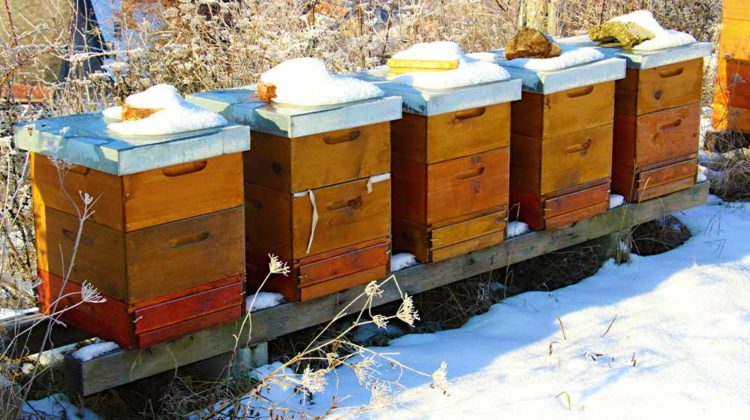
When Is It Too Late To Start A Beehive?
Starting a beehive in spring is the best idea. You might get away with starting it as late as June or July but the bees probably won’t be able to make enough honey to keep them going over winter. This doesn’t mean that the colony won’t survive but you’ll certainly have your work cut out providing it with supplementary food over winter.
It is NEVER a good idea to start a beehive during winter. The bees will be dormant and contained to the hive so there’s really no point. Moreover, since there will be no food or supplies for the bees, they’d have an extremely hard time surviving the colder months, even with your help.
We realize that you’re probably really keen to get started with your hive; it’s an exciting time. But don’t be tempted to do anything during winter. It is possible to build your hive and get it prepared for bees in the spring but other than that, you’ll need to be patient.
As we mentioned earlier, you will also need to order your bees and doing this in January or February will make sure that you have a priority place on the supplier’s list.
Starting Your Beehive – Top Tips
Regardless of when you start your beehive, you will have quite a bit of planning to do before you can even think about putting any bees into it. Here are some top tips on starting a beehive to ensure that your colony is happy and healthy.
Choosing The Right Beehive
You have two main options when it comes to your beehive; you can build it yourself or you can buy a ready-made one.
It’s important to make sure that, if you build the hive yourself, you use a plan. There are plenty of online plans that you can access for free which is a great start. Although, you will need some basic woodworking skills if you’re going to build the best hive for your bees.
That said, a lot of people prefer to buy a ready-made beehive. Some of these even come painted so you don’t need to do anything. The cost of this won’t vary too much from buying your own materials and building the hive from scratch but it’s all about personal choice. If you want a quick setup then buy a hive, if you fancy a DIY project then you can build your own.
Other Important Equipment
When you initially install your bees into the hive, they probably won’t be as aggressive; they’ll be too focused on getting set up in their new home. However, having protective clothing is always a good idea when working with bees. You might not need it right away but you certainly will get use out of it so it’s important to include it in your setup costs.
One of the most important basic items of clothing is a face veil to prevent you from getting stung on the face. However, most people prefer to buy a full bee suit which offers complete protection.
Another thing you should consider before even thinking about buying bees is whether you are allergic to them. Being stung when you are allergic could result in serious symptoms and in the worst cases, it can kill you. Your doctor should be able to provide you with an allergy test if you are unsure.
You may also need a bee smoker. These are used to calm the bees when you need to inspect or work on the hive. However, there are some people that don’t like to use them and prefer to find bee smoker alternatives.
Another essential thing to get your hands on is a set of hive tools. You’ll want at least two and these will help you to pry open parts of the hive. They’re very affordable so it’s a good idea to stock up as it’s not uncommon for them to go missing.
New beekeepers will also need to purchase a top feeder. This is what you will use to feed sugar syrup to your bees when they need a boost. It’s possible to make one of these using a gallon can with holes in it. However, they really are very affordable to buy and that’s a lot more convenient.
Finally, you will need to get a queen catcher. If you need to get hold of her for whatever reason then this tool will make it far less stressful for her and a lot easier for you.
Where To Place The Hive
Another key thing to think about when you are starting your beehive is where you’ll place it. It’s no good just putting it anywhere as there could be things that disturb it and this will upset the bees. Moreover, you don’t want to place it too close to areas where you and your family will be relaxing as not everyone wants a lot of bees buzzing around them.
Find a place where the entrance of the hive isn’t going to be disturbed by strong winds, especially during the winter. Putting it with the entrance facing southwest is normally the best option. As well as keeping it out of the wind, this positioning will mean that, during the heat of summer, the hive will get plenty of shade in the afternoon. But when winter comes around, the sun will be on the hive, keeping the bees as warm as possible.
Educate Yourself
Beekeeping isn’t a hobby that you should just jump into without thinking. You are taking care of live creatures so it would be unfair to do this without having the right knowledge to keep them safe and healthy.
What’s more, the last thing you want is to invest in a beehive and everything that goes with it only to find that it dies after the first winter. By clueing yourself up as much as possible, you will give your hive the very best start and you will be better able to handle any problems that may arise.
What’s great about beekeeping is that there are always new things to learn. Even when you have educated yourself initially, you’ll always find that you discover new things which is why so many people enjoy this hobby.
Conclusion
Beekeeping is a rewarding hobby in many ways but if you don’t start your hive at the right time then there is a good chance that it will fail.
The best time to start a beehive is in spring but a lot of people want to know how late can you start a beehive? You really shouldn’t start the hive any later than July but by doing this, there is a risk that the colony will struggle over the first winter. For this reason, you will need to provide extra food and pay close attention to the bees to ensure their survival.

